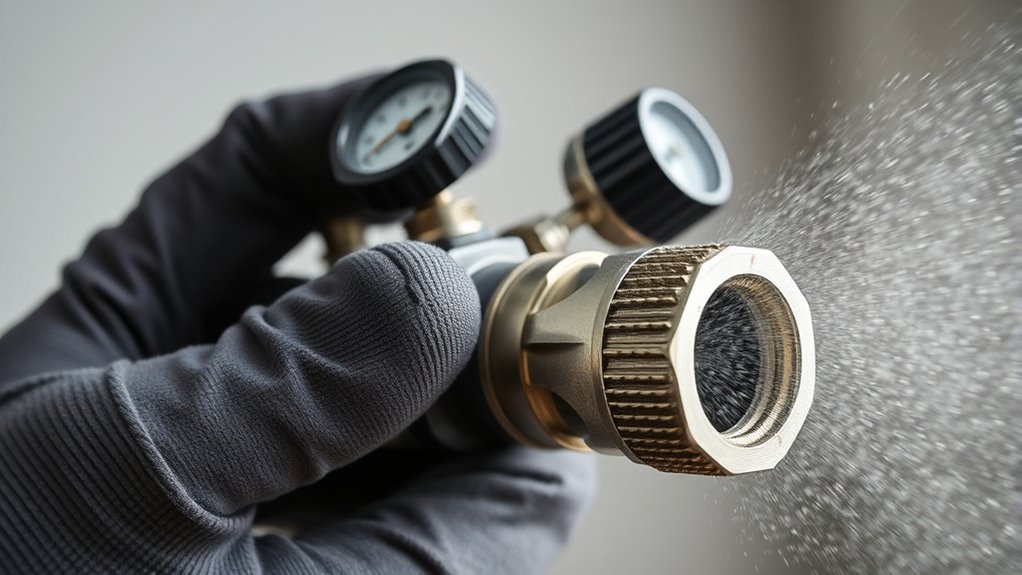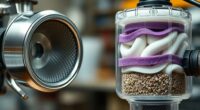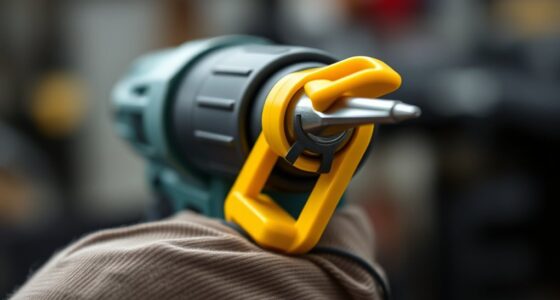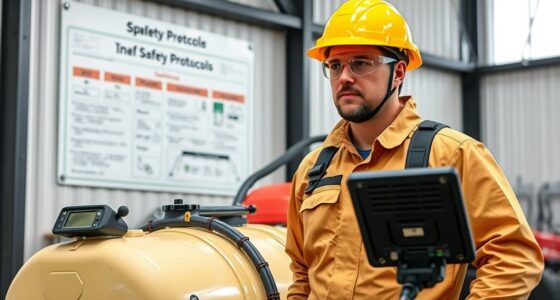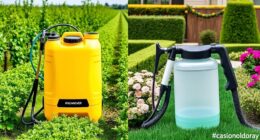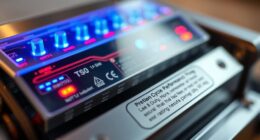Injection injuries from airless sprayers happen when high-pressure liquid enters your skin, causing serious internal damage if not handled properly. To avoid this, always wear protective gear like gloves and goggles, follow safety guidelines, and inspect equipment regularly. If an injury occurs, act quickly by stopping work, treating the wound properly, and seeking medical help. Understanding these safety steps now can help you stay safe—continue to discover essential prevention tips.
Key Takeaways
- Injection injuries occur when high-pressure airless sprayers force chemicals into the skin, causing internal tissue damage.
- Recognizing symptoms like pain, swelling, or numbness promptly is vital for immediate response.
- Use proper protective gear, including gloves, goggles, and respirators, to prevent injuries during spraying.
- In case of injury, keep the person calm, immobilize the area, and seek urgent medical attention.
- Regular equipment maintenance and safety training reduce the risk of high-pressure injection injuries.
What Are Injection Injuries and How Do They Occur?
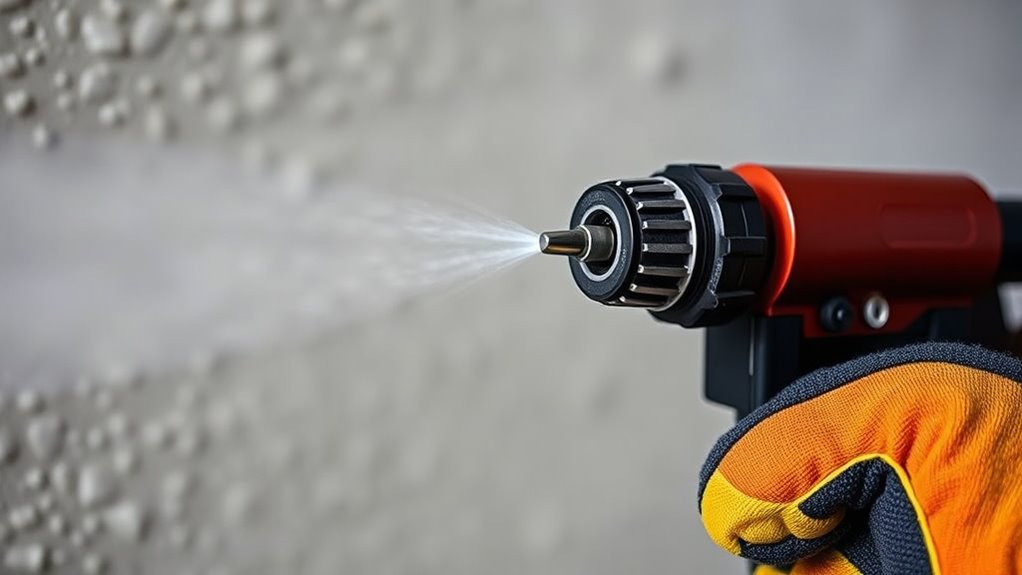
Injection injuries happen when a high-pressure spray or liquid penetrates the skin and enters the body. This often occurs during the use of airless sprayers, where the force can cause chemical exposure through skin penetration. When the liquid or chemical enters the skin, it bypasses the body’s natural barriers and can cause severe tissue damage or other health issues. You might not realize the injury immediately because the entry point can look minor, but the internal damage can be significant. Proper safety measures are essential to prevent this type of injury. Always wear protective gear, especially gloves and long sleeves, to reduce the risk of chemical exposure and ensure the high-pressure spray does not penetrate your skin. Recognizing how these injuries happen is key to avoiding them.
Recognizing the Risks of Airless Sprayers
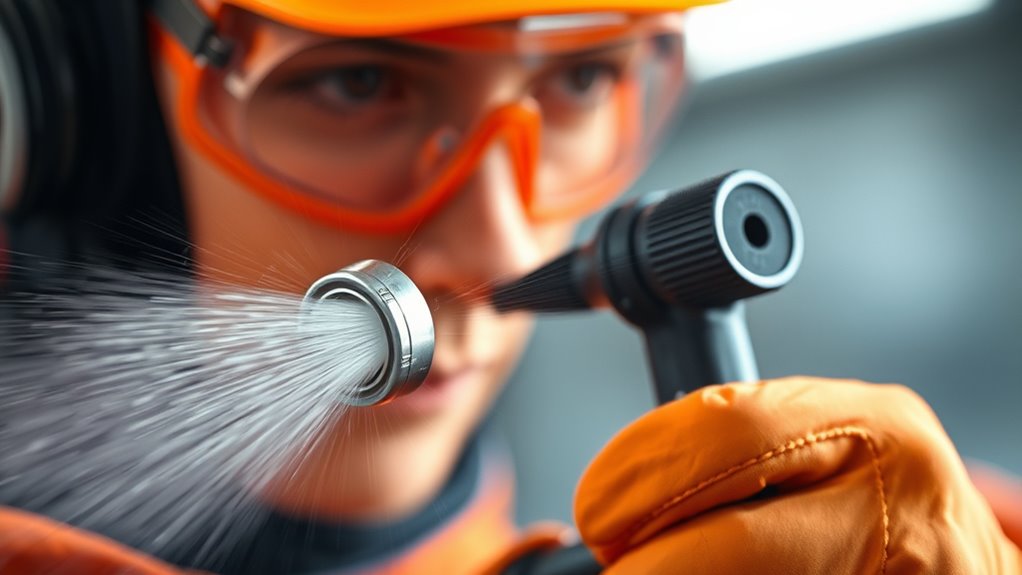
Understanding the risks associated with airless sprayers is essential for anyone working with these tools. You need to be aware of potential hazards like high-pressure fluid injection and accidental sprays. Proper hazard awareness helps you identify dangerous situations before they cause injury. Enrolling in thorough training programs is vital—they teach safe handling, pressure regulation, and emergency response. Here’s a quick overview:
| Risk | Warning Signs | Prevention Tips |
|---|---|---|
| High pressure | Sudden equipment shifts | Regular maintenance |
| Inadequate training | Improper spray technique | Safety gear use |
| Equipment failure | Leaking or damaged parts | Routine inspections |
Being familiar with the role of contrast ratio in projectors can also help prevent visual discomfort or misjudgments during operation, similar to how understanding safety hazards minimizes injury risks.
Common Causes of High-Pressure Injuries
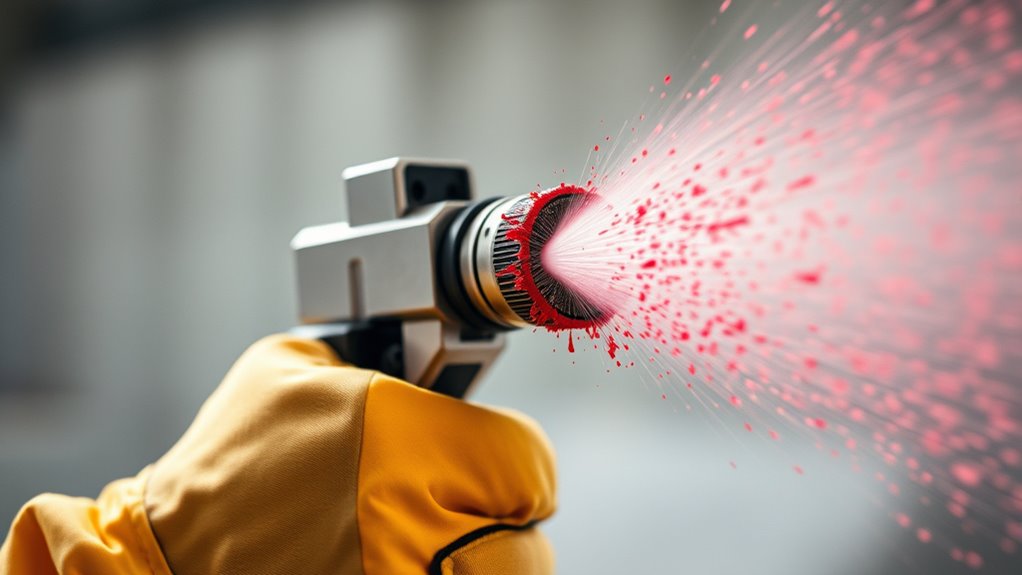
Many high-pressure injuries occur when operators neglect proper safety procedures or mishandle equipment. One common cause is chemical exposure resulting from accidental injection or splashes, often due to rushing or improper handling. Equipment misalignment also plays a significant role; when spray tips or hoses are not correctly aligned, pressure can cause sudden releases or leaks. These issues increase the risk of injection injuries, especially if protective gear isn’t used or safety protocols aren’t followed. Additionally, failing to inspect equipment regularly can lead to unnoticed damage or wear, which may result in sudden high-pressure leaks. Being aware of equipment maintenance and conducting regular safety checks are crucial to prevent these hazards. Staying vigilant, ensuring proper equipment setup, and following safety guidelines are essential steps to prevent these common causes of high-pressure injuries.
Identifying Symptoms and Immediate Response
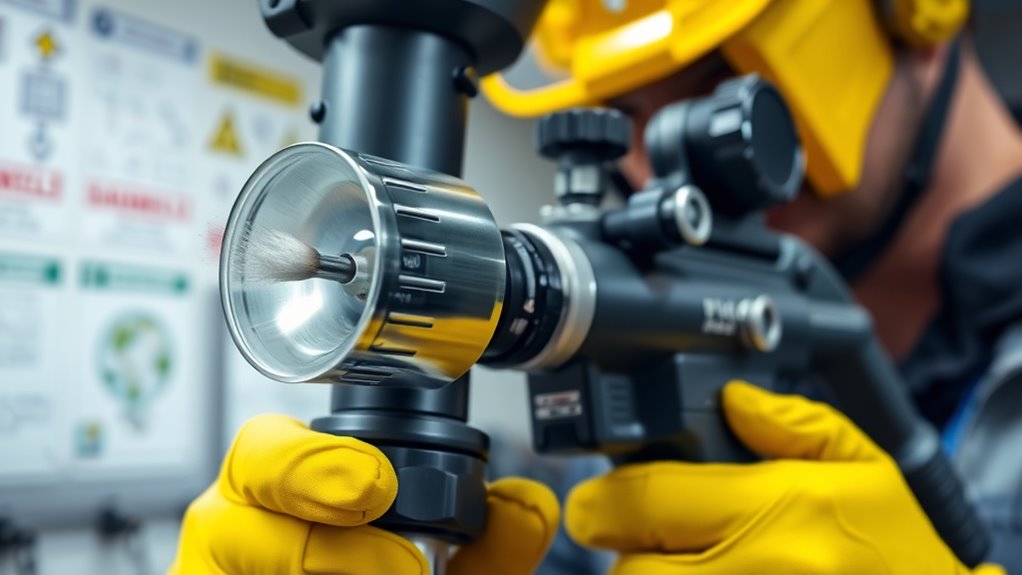
Recognizing the signs of an injection injury promptly can make a crucial difference in its outcome. Injury symptoms often include pain, swelling, and a feeling of numbness or burning at the injection site. You might notice skin discoloration or a small puncture wound that seems out of proportion to the injury. Some individuals experience a metallic taste or dizziness. If you suspect an injection injury, your immediate emergency response should involve stopping work immediately and removing yourself from the hazard. Do not attempt to treat the injury yourself; instead, seek medical assistance right away. Prompt action can prevent further tissue damage and complications. Remember, quick recognition and response are essential to minimizing injury severity and ensuring proper medical care. Adapting your workspace to safety standards can also help prevent such injuries from occurring.
Essential Safety Equipment and Protective Gear
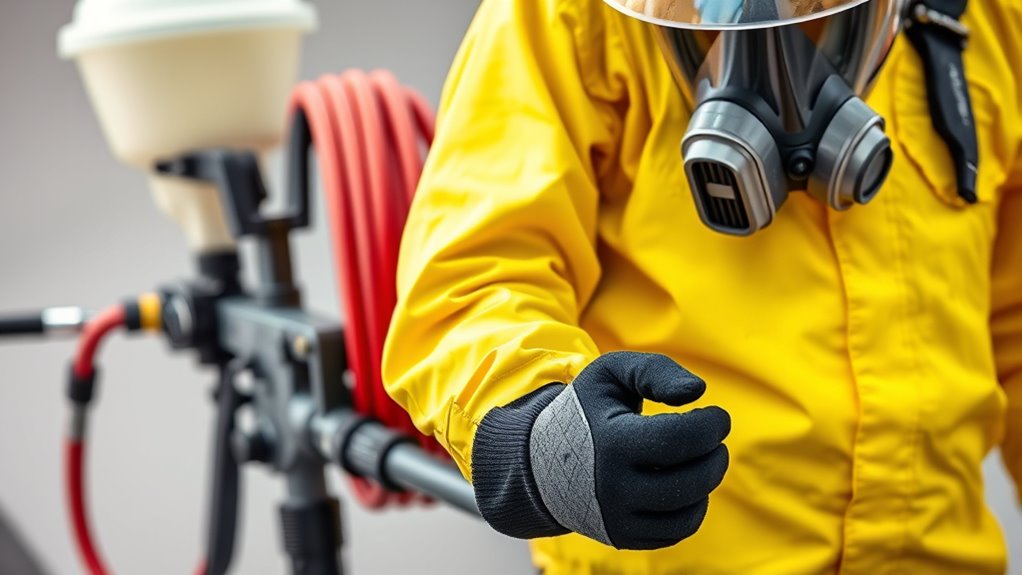
Wearing the right safety equipment and protective gear considerably reduces your risk of injury when working with airless sprayers. Essential protective gear includes gloves, safety goggles, a respirator or mask, and coveralls or long-sleeve clothing to shield your skin. These items help prevent accidental injection injuries and exposure to hazardous chemicals or pressurized paint. Following proper safety protocols, such as inspecting your gear before use and ensuring a snug fit, is vital. Always wear your protective gear consistently, even during minor tasks, to minimize risk. Remember, safety equipment acts as your first line of defense against injury. Prioritizing the right protective gear and adhering to safety protocols keeps you safe and helps avoid serious accidents when operating airless sprayers. Recognizing angel number signs can also serve as a reminder to stay alert and cautious during your work to prevent accidents.
Best Practices for Safe Operation of Airless Sprayers
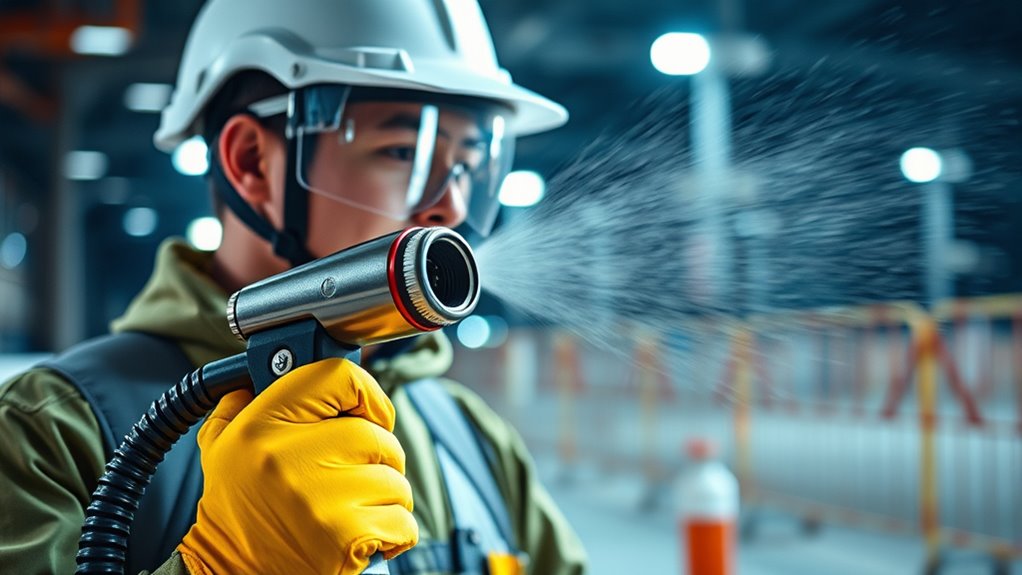
To operate an airless sprayer safely, you must follow established best practices that minimize risk and guarantee effective performance. Start with proper sprayer calibration to ensure correct pressure and flow, reducing overspray and accidents. Always handle chemicals carefully, wearing appropriate protective gear and following manufacturer instructions. Keep the spray tip clean and replace it when clogged or worn to prevent uneven spray patterns. Before starting, test the sprayer on a scrap surface to check for leaks or malfunctions. Use the table below to reinforce key safety practices:
| Practice | Purpose |
|---|---|
| Regular sprayer calibration | Accurate application and safety |
| Proper chemical handling | Prevent injuries and exposure |
| Inspect equipment | Detect issues early |
| Maintain protective gear | Ensure personal safety |
Being aware of injury prevention techniques can further reduce the risk of accidents during operation.
Proper Maintenance and Inspection Procedures
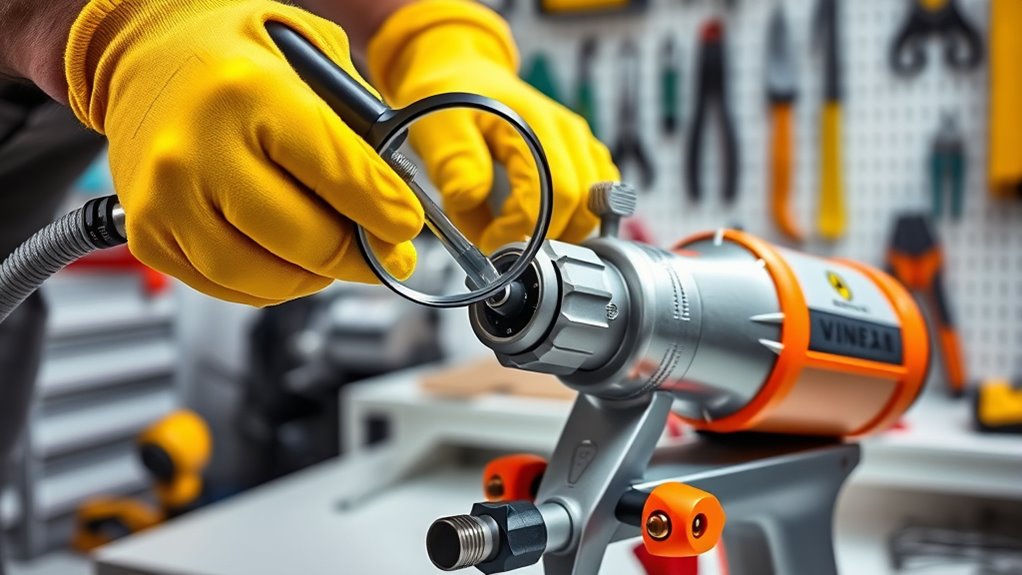
Regular maintenance and thorough inspections are essential to keep your airless sprayer functioning safely and efficiently. Preventive maintenance involves checking for worn or damaged parts, cleaning nozzles, and lubricating moving components regularly. An inspection checklist helps you systematically identify potential issues before they escalate. Prior to each use, inspect hoses, fittings, and seals for leaks or cracks. Ensure that pressure relief valves and safety devices are working correctly. Replace worn-out parts promptly to prevent malfunctions. Consistent upkeep not only prolongs your sprayer’s lifespan but also reduces the risk of injection injuries caused by equipment failure. Butter’s artistic significance highlights the importance of detailed care and maintenance in preserving the integrity of delicate tools and materials. By sticking to a routine maintenance schedule and using a detailed inspection checklist, you can operate your sprayer with confidence and safety.
Steps to Take After an Injury Occurs
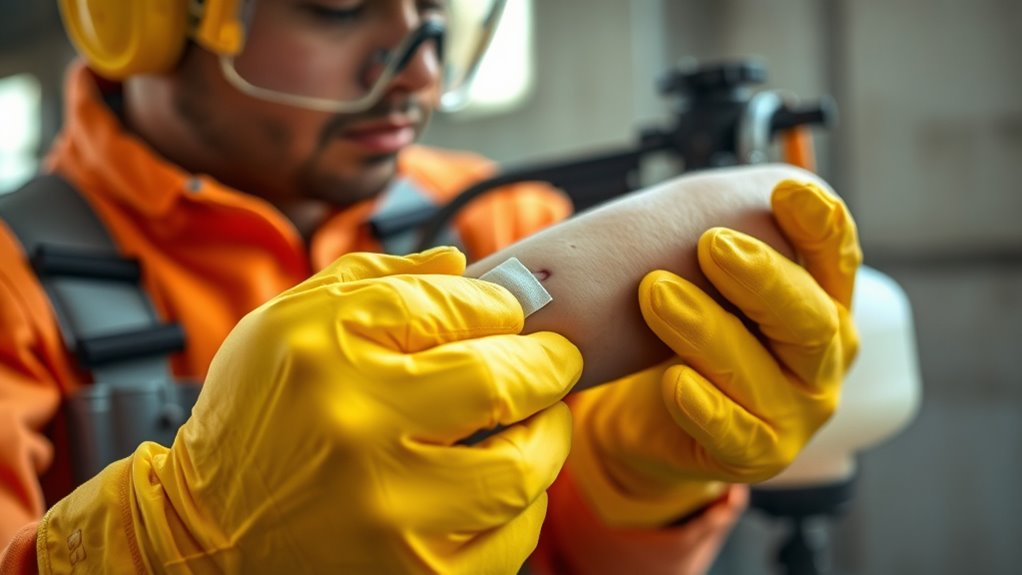
If an injection injury occurs while using an airless sprayer, prompt action is essential to minimize harm and prevent further complications. Your immediate focus should be on effective first aid and emergency response.
- Stop the spray immediately and turn off the equipment to prevent more injection.
- Seek medical attention right away, even if the injury seems minor, as injections can cause internal damage.
- Clean the wound with soap and water if possible, and avoid trying to remove the embedded substance yourself.
- Be aware that AI safety measures are constantly evolving to address vulnerabilities and ensure safer deployment of AI technologies.
Always stay calm, keep the injured person still, and avoid applying pressure or using a tourniquet unless instructed by emergency personnel. Quick, decisive steps are crucial for proper treatment and recovery.
Frequently Asked Questions
How Can I Prevent Accidental Injections During Maintenance?
To prevent accidental injections during maintenance, always follow strict safety protocols. Before starting, disconnect the sprayer from the power source and depressurize the system. Wear appropriate protective gear, including gloves and eye protection, to shield yourself. Never bypass safety valves or remove tips while the system is pressurized. Regularly inspect equipment and stay vigilant. These steps help minimize risks and keep you safe during maintenance tasks.
Are There Specific Training Certifications for Airless Sprayer Safety?
You might think general training is enough, but specific certification programs really enhance your safety. Yes, there are specialized certifications for airless sprayer safety that teach you essential safety protocols and proper handling techniques. These programs ensure you’re well-prepared to prevent injuries and operate equipment correctly. Investing in these certifications not only boosts your confidence but also helps you stay compliant with workplace safety standards, protecting you and your team.
What Are Long-Term Health Effects of Injection Injuries?
You might experience long-term health effects from injection injuries, like chronic pain or nerve damage. If the injury isn’t treated promptly, you could face persistent discomfort or loss of sensation in the affected area. Over time, nerve damage can lead to numbness or weakness, impacting your daily activities. It’s essential to seek medical attention immediately to minimize these risks and prevent lasting health issues.
How Often Should Safety Equipment Be Replaced or Inspected?
You should regularly inspect your protective gear and stick to a strict inspection schedule to guarantee safety. Think of your gear as your first line of defense; neglecting it risks injury. Replace or repair equipment immediately if it shows signs of wear or damage. Consistent inspections, ideally before each use, help catch issues early and keep you protected, preventing potential injection injuries. Stay vigilant and prioritize your safety at all times.
Can Injection Injuries Occur From Non-Professional Use?
Yes, injection injuries can happen during DIY safety if you’re not careful, exposing you to consumer risks. Even if you’re not a professional, improper handling or lack of safety gear increases the chance of accidental injection from airless sprayers. Always follow safety guidelines, use proper protective equipment, and stay informed about potential hazards. Taking these precautions helps prevent serious injuries and keeps your DIY projects safe.
Conclusion
By understanding injection injuries and respecting your airless sprayer, you’re steering clear of dangerous storms. Think of safety gear and proper practices as your sturdy ship, guiding you safely through turbulent waters. When you stay vigilant, you prevent injuries from tearing through your work like lightning. Remember, a cautious approach is your anchor—keeping you grounded and secure as you navigate each project with confidence and control.
